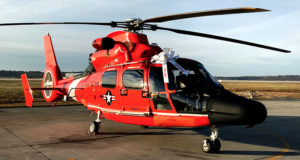
The Coast Guard is set to start full-rate production of an overhaul program to extend the life of its Airbus H-65 Dolphins by 10,000 flight hours and at the same time upgrading the avionics on the short-range recovery helicopters. Service Life Extension Program (SLEP) work was done at the same time and on the same production line as the avionics upgrades for the first H-65 and finished on Dec. 18 During low rate initial production (LRIP) the service reviewed and…

 By
By 











